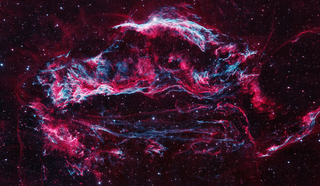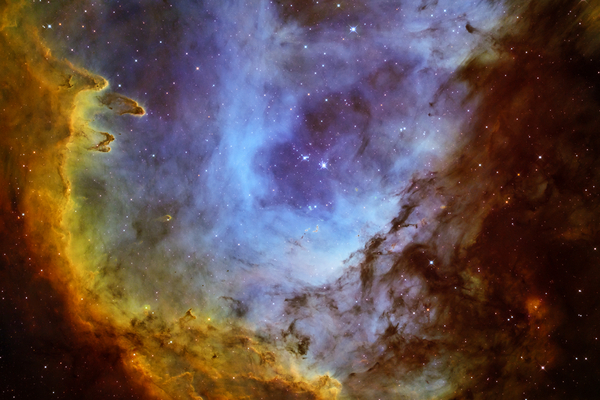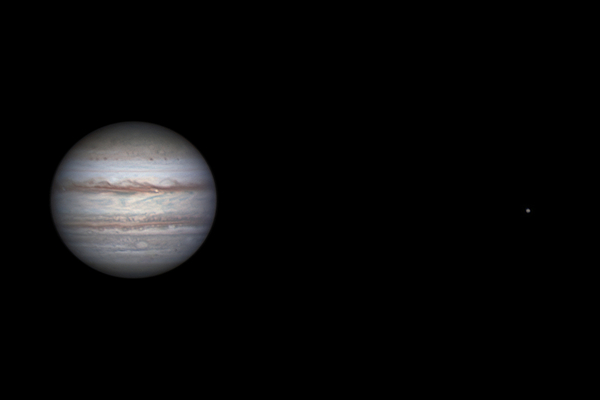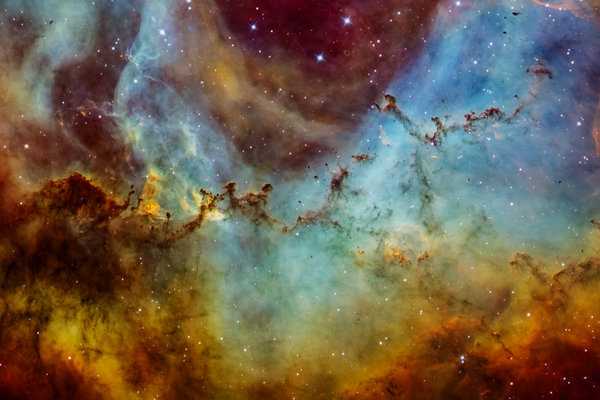Picture of the Month - November 2020 - The Veil Nebula
An outstanding image of the most beautiful phenomenon in the northern sky
A wonderful and special astrophotography image each month by Hungarian astrophotographers.
The Veil Nebula is a supernova remnant in the constellation Cygnus. The brighter parts of the extensive nebula can be observed by looking into a larger telescope, yet the fine details are only visible with the tools of photography. However, photography also has its limitations. There are a huge amount of stars in this region of the Milky Way obscuring the faintest details that are difficult to capture even in good conditions. Because of these difficulties only a handful of good images are taken of the entire phenomenon. In the following you can read the author’s account on how he was able to achieve such an exceptional result.
This summer, I committed myself to capturing one of the most popular objects in the summer sky, a supernova remnant called the Veil Nebula as spectacularly as possible. The key to this was to put this relatively large object together from high-resolution mosaic panels. The result shown in the picture was cropped from six panels.
Each panel was stacked from eighteen, twenty-minute long raw images with the use of a 6 nanometer H-alpha filter and the same amount of raw images with an OIII-filter. These were put together to form a bicolor picture during post-processing. Each panel had an integration time of 12 hours, so I processed 72 hours of exposure time in total. It was quite risky to get into the job without knowing if I would have enough clear nights with a window of only 3-4 months available in a single year to take this picture.
Since I decided to make a mosaic, it was highly important to compose each panel as accurately as possible. Both the angle of rotation of the camera and the positioning of the field of view required an accuracy of 15 arc seconds.
During post-processing, my goal was to show this area in depths never seen before, taking advantage of the increased field of view and resolution. I didn’t try to make an astrophoto which details are fit for zooming in, I didn’t want to take six separate astrophotos. Instead my goal was to achieve a more dynamic and deeper result compared to the wide-field astrophotos with a similar field of view.
Handling the stars also had an important role during processing. Namely we are used to the fact that the bigger part of the Veil Nebula we see in a picture, the more inflated the stars are. There are two really effective ways to fight the inflation of the stars: large aperture and narrow bandpass filters. My 200/800 Newtonian telescope already ensures a smaller star size and the use of narrowband filters further reduces the apparent size of the stars. Even the pixel resolution was higher because of the mosaic technique, so everything was given to enjoy this wonderful celestial phenomenon without the disturbing multitude of stars.
The end result is a spectacular astrophoto of the Veil Nebula showing incredible, hidden details of one of the most beautiful objects in the summer sky.
Péter Feltóti





